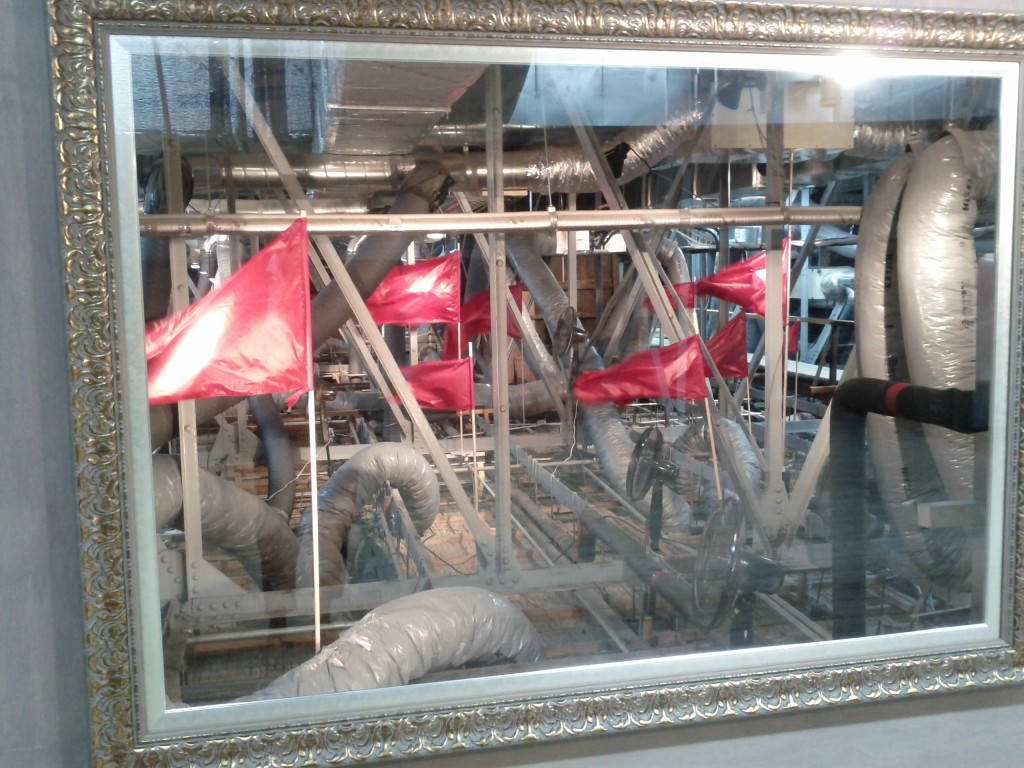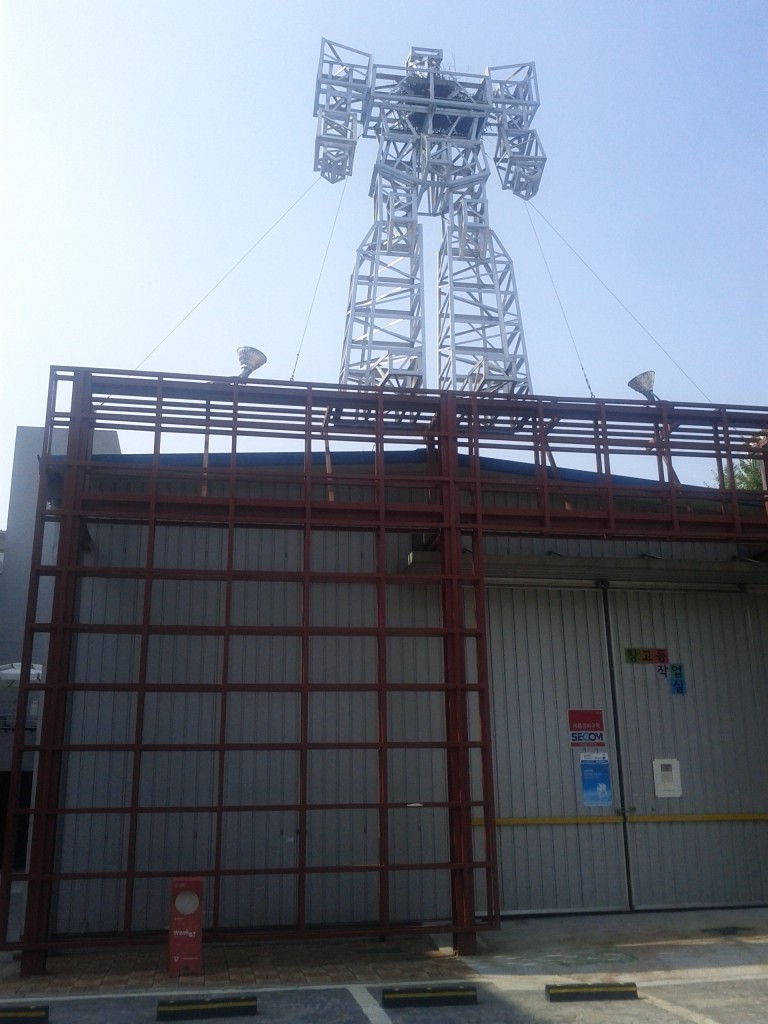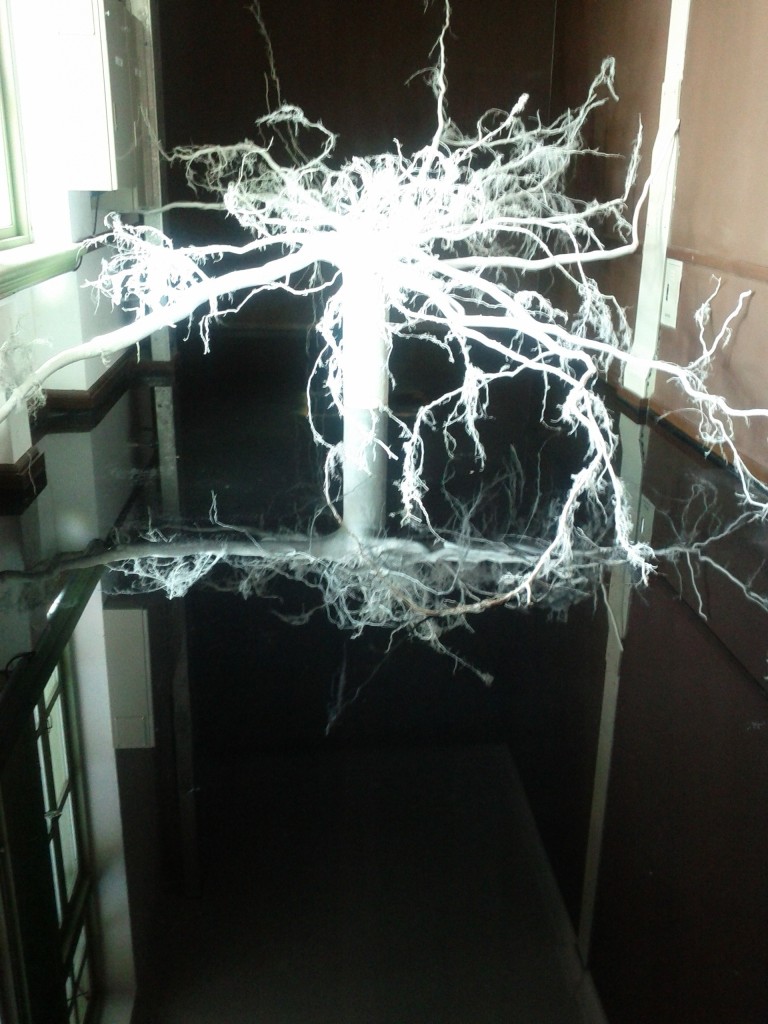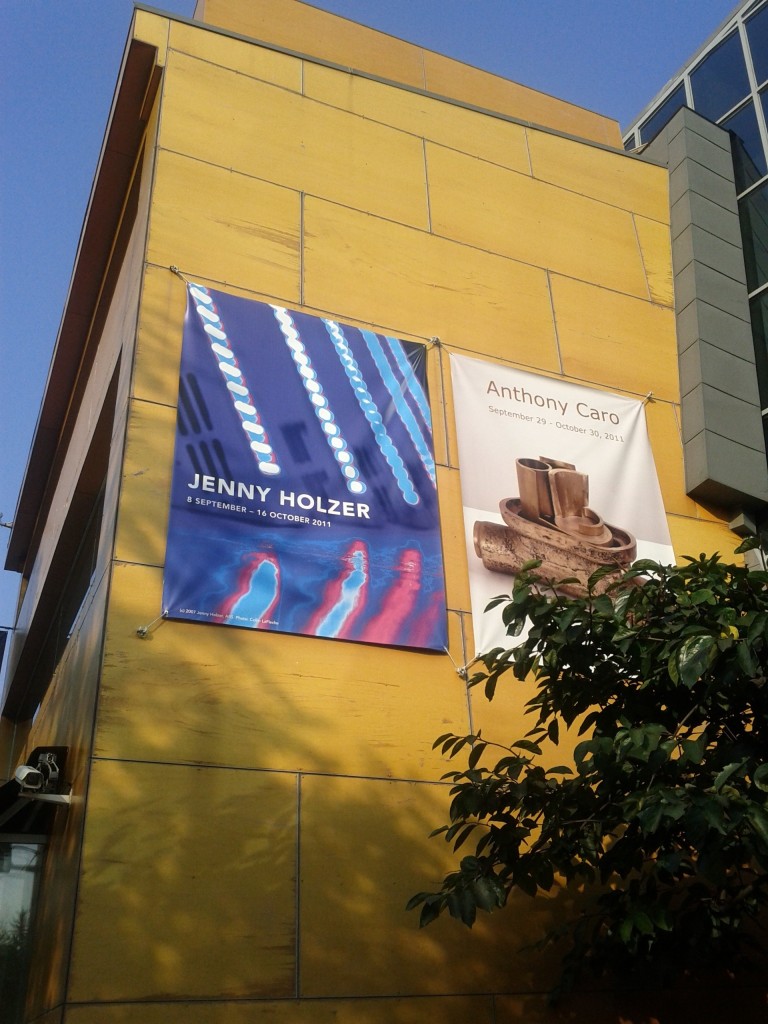The Fringe: Seoul Art Space Geumcheon Residency, Part 1
October 12, 2011
By Kristin Juárez
Kye-Ryoon Han, Flag, 2011, at Culture Station Seoul 284, dimensions and materials vary. Photo by Kristin Juarez.
Annyeong Haseyo y’all. I’ve landed in Seoul, South Korea for a one-month art criticism residency at Seoul Art Space Geumcheon (SASG). SASG is a city-funded international artist residency program and studio space for local artists. Established in 2009, the art space transformed a former printing factory into a center for interdisciplinary experimentation and community art projects, offering one example of an urban area revitalized through the cultivation of the arts. Currently sharing the space are six international artists in residency, along with a collection of Korean artists. (Some of them are building a robot as I write this). There will be more to come on the artists who are here and their upcoming shows in the city in future articles. But first some initial impressions of a few art spaces I’ve visited.

A view of the exterior of Seoul Art Space Guemcheon, my host institution. Photo by Kristin Juárez.

Cho Duck Hyun, Metaphor, 2011, at Culture Station Seoul 284, various materials and dimensions. Photo by Kristin Juárez.
Later, I headed down to a performing arts district to catch the Hello performance—a live public dance and screen project, called Large Screens and the Transnational Public Sphere, produced as a public art collaboration between Seoul and Melbourne. This year marks an official year of friendship between the two countries, and to celebrate, the project uses Skype to teach one another a new dance. Described as a continuously evolving dance routine, movements are passed back and forth in real time between participants in Melbourne and Seoul over the course of an hour. In an exchange that resembles the telephone game, participants learn what they can and then teach what they remember to the next participant in the other country.

Jenny Holzer at Kukje Gallery. Photo by Kristin Juárez.
I am beginning to learn about the city and its politics of space as a rapidly growing metropolis. Though Seoul and Atlanta can’t necessarily be described as analogous cities, there are threads that do connect the two; they just articulate themselves in dramatically different ways: In Seoul, the ever-present railroads are used to transport people not goods, and the old buildings that are repurposed into art spaces are managed by the government not artists, but in case I felt too far from home the nearby Coca-Cola plant acts as a reminder. During my month here, my plan includes visits to artist studios, two biennials, and all the art spaces I can find. Stay tuned for more updates.
Kristin Juárez will be in Seoul, South Korea through October 28, 2011. Click here to read Seoul Residency, Part 2.
In her monthly column, The Fringe, Kristin Juárez writes on the intersections of art and the public sphere. She emphasizes art as a vehicle for visualizing social, environmental, and political issues pertinent to our lives both in Atlanta and abroad. This column traces her exploration of interdisciplinary practices that continue to reflect, foster, or challenge contemporary notions of collective identity.
Check BURNAWAY to read The Fringe on the second Wednesday of every month.
* the article has quoted from
http://www.burnaway.org/2011/10/the-fringe-seoul-residency-part-1/

